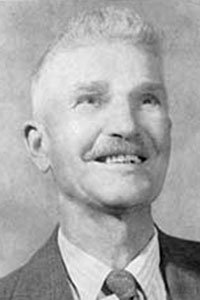
Eminent Farmer
County: Fall River
“Twice a pioneer,” describes T. A. Jackson of Fall River County. After a boyhood in Iowa, he bought a piece of prairie land near Wayne, Nebraska, in 1891. He went to Ardmore in 1919.
Of the home ranch of 1,120 acres, 300 acres of the best land is devoted to growing corn, sorghum and small grains. All of the crop land is laid out in 20-rod wide strips which vary in length. The crops on the strips are rotated with a row crop and a small grain every second year.
Coupled with this system of field layout, is a system of thorough tillage and constant cultivation to create a dust mulch to stop moisture evaporation. He cultivates his corn once a week from planting time until it is too big to go over.
Even the small grain gets a cultivation. Jackson seeds with a deep furrow drill which leaves a ridge between the rows. He finds that he can go over the small grain with a harrow every week until it is four to 5 inches tall without injuring it. He has found that this system of farming increases the yield about one-third, on the average, over ordinary practices.
While cattle raising is the main business of the ranch, Jackson and his partner son raise about 200 pigs and sixty lambs each year.
In 1951 the ranch consisted of 3,100 acres of which 1,980 acres of pasture land is in Wyoming.
Jackson was born at Malvern near Council Bluffs, Iowa, Sept. 14, 1877. He attended country school through the fifth reader which was as far as the school went.
In 1900 he married Burle Moats of Missouri Valley, Iowa. Six children were born to them, one dying in infancy. The Jacksons were able to see all their children through college.
While living at Ardmore, Jackson served as police judge for twenty years. He also was active as an auctioneer for 25 years.
He was active with the Corn-Hog program in the early AAA days and was one of the founders of both the county crop improvement association and the county soil conservation district. He has grown demonstration plots of new experimental crop varieties on his ranch for many years. He and two other farmers were instrumental in making Fall River County the second place winning district in the Greater South Dakota association soil and moisture conservation contest in 1947.

